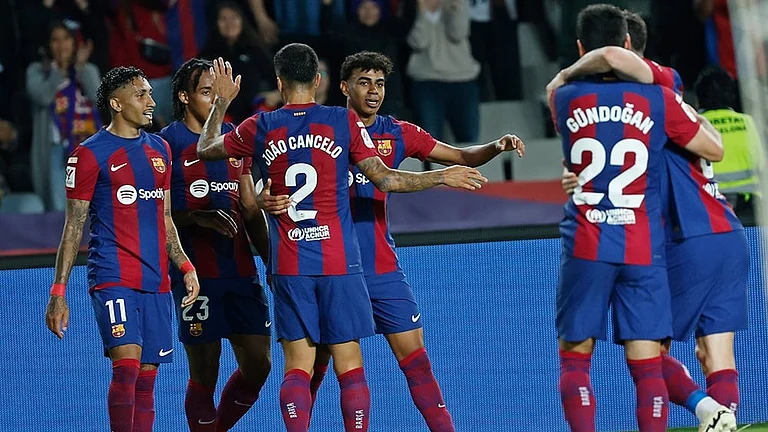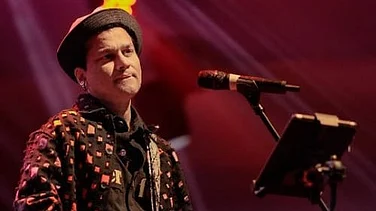A white model wearing a snazzy jacket holds a broken piece of cardboard. Around her are plastic-wrapped mannequins. Some mannequins are strewn on the floor, some lie slant against the concrete walls. Some others had limbs missing. The model held one right above her shoulder. Whether it was a metaphor or an honestly mistimed ad campaign, the visuals bore a sharp resemblance to the open-air prison that is now Gaza.
When there is so much death and destruction, fashion major Zara chose to showcase its new jacket line in an ad campaign with an eerie parallel to the piles of bodies in Gaza that are wrapped in white cloth or plastic tarps. These bodies lie stiff in hospitals, schools, streets, and buildings that are doubling up as mass graves. The company faced severe backlash and later apologised, claiming that the campaign was shot before October when the war on Gaza escalated.
But to what extent can the fashion industry go beyond being apologetic about its existence during a conflict?
Visuals Are Power
“The first time I saw it, I was completely offended and thought that the company was attempting to be sarcastic or not sympathetic,” says a physician from Gaza about the Zara ad. She goes by the name ‘From Gaza, With Love’ on Instagram.
In a post, she wears the black and white Palestinian keffiyeh, symbolising the struggle for justice. Amid making 100 calls daily to her parents in Gaza, she came across the ad. She finds it insensitive. “To be apathetic towards Gaza’s situation has made me boycott the brand,” she says.
Unlike the Nakba of 1948, when hundreds of thousands of Palestinians were ethnically cleansed from their homes by Zionist paramilitaries, the current escalation of conflict in Gaza has brought searing images to social media platforms.
So when a top fashion company appears completely unfazed about the extent of human suffering miles away that can be seen on devices within reach, it is emblematic of the problems deeply rooted within the industry.
Who Owns Big Fashion?
Before billionaire fashion conglomerates, one’s clothes signalled status. Now, the fashion industry embodies identity through dress, an extreme of capitalism, writes Katalin Medvedev, an international dress and fashion researcher at the University of Georgia in the Atlantic.
Though no fashion house has publicly attributed their lapses to a lack of internal diversity, it is often visible in their responses to controversies.
The industry has for long made headlines for a lack of runway diversity, cultural appropriation, and high-profile racist gaffes. The 2020 ‘Black Lives Matter’ resurgence after George Floyd's killing prompted brands to hire for ‘diversity’ and ‘inclusion’.
Until August 2023, US Vogue never featured an African-American on its cover. Beverly Johnson made history, becoming the first black model on Vogue’s American cover that month. Despite early discouragement from her managers about major magazine covers due to her race, she proved them wrong, featuring on Vogue's cover three more times.
Last year, Nature journal’s study of 889 fashion designers revealed only 22 per cent were of a minority race or ethnicity. At Kering, the second-largest fashion group, only one of 29 creative directors has been a person of colour — Taiwanese American designer Alexander Wang, who led Balenciaga from November 2012 to July 2015.
Owning high-end items like a Gucci belt or Chanel earrings, worth thousands, is a status symbol accessible only to the wealthy elite. The money from these products funnels back to Europe’s affluent, predominantly controlled by French billionaires, their children and European aristocrats. LVMH and Kering, overseen by these elites, dominate the fashion industry, holding ownership of the most successful brands.
Fashion Amidst Suffering
Some fashion brands have gone where no one else has gone before.
Balenciaga was the first brand in mainstream fashion to explicitly address Russia’s invasion of Ukraine on its ramp in March 2022.
Male and female models, dressed in layers, oversized hoodies and cape-like dresses, walked behind each other with their heads bowed down. They stumbled against strong winds and fake snow, making for an uncomfortable display of emotions on a ramp unlike ever before. And yet it resembled the unfolding humanitarian crisis, with thousands of refugees being forced to flee their homes in Ukraine.
It was personal for Balenciaga’s creative director, Demna, who, at the age of 12, was forced to flee his home by Abkhazian separatists during a civil war in his country.
Notes and Ukrainian flag-coloured T-shirts were placed on 525 seats, stating that while “fashion week feels like some absurdity”, cancelling the show would be “surrendering to the evil that has hurt me for almost 30 years”.
“The war in Ukraine has triggered the pain of a past trauma I have carried in me since 1993, when the same thing happened in my home country,” wrote the designer.
The Gaza conflict is personal for American supermodels Gigi and Bella Hadid, of Palestinian descent. They’ve been vocal about their views on Israel’s long-standing war on Gaza, advocating for Palestinians. The cause resonates deeply with their family, forced to flee Palestine in the 1940s. Despite this, the Hadid sisters have faced attacks and criticism for their stance.
Both the models received death threats for being pro-Palestine and also received sharp criticism for staying silent in the initial weeks. “It’s important to understand the hardship of what it is to be Palestinian, in a world that sees us as nothing more than terrorists resisting peace. It is harmful, it is shameful, and it’s categorically untrue,” Bella wrote in her first post on the war.
Despite the Hadid sisters modelling for top fashion brands, numerous celebrities openly support Israel amid ongoing attacks on Gaza.
Chanel, along with other corporations, condemned attacks on Israel, avoiding mention of the Gaza crisis. Their stance was accompanied by a $4 million donation for emergency aid exclusively in southern Israel.
Clothing retailer American Eagle put up a lone message of a bright Israeli flag on its digital billboard in New York’s Times Square in late October.
“Praying for Israel,” Justin Bieber posted on Instagram, over an image of what was actually Gaza. He later deleted the image.
The war robbed newborns of the joys of infancy, now swathed in tin foil in hospital incubators — or what remains of them. It snatched parenthood from mothers and fathers who witnessed their children vanish beneath the rubble of their homes.
“These are the same mothers who love their children just like other mothers in the rest of the world,” says Haneen Harara, a Gaza-based Palestinian journalist. According to Gazans, the war should be personal for everyone across the world to fully understand its horrors. So when they saw scores of American and British youth wearing the keffiyeh, chanting slogans for a ceasefire in Gaza, it offered little, yet, much needed hope that they were not alone.
Each detail on the scarf symbolises an element of the Palestinian culture — the olive leaves represent perseverance, strength and resilience; the fishnet pattern represents Palestinian fishers and the people’s connection to the Mediterranean; and the bold pattern represents trade routes with neighbouring merchants of Palestine.
Ramy Al-Asheq, a Palestinian Syrian poet who lives in Berlin, also had the length of his forearm tattooed with the pattern of a keffiyeh, after a police crackdown across the world on those who were seen wearing the garment. “The keffiyeh was being criminalised and people were asked to take it off,” he said. “I said: ‘Okay, you can make me take it off, but you have to cut my arm to do so.’”


























